How “Pretty Hands” propelled Duncan Rhodes to Warhammer fame
Perhaps the most recognizable employee that Games Workshop has ever had is Duncan Rhodes. Even though there are undoubtedly more well-known names—John Blanche, Bryan Ansell, and the Perry brothers spring to mind—they are all from an era before video. They created our rulebooks, sculpted our figures, and were experts at Warhammer, but Duncan Rhodes’ YouTube lessons introduced painting to a whole new audience.
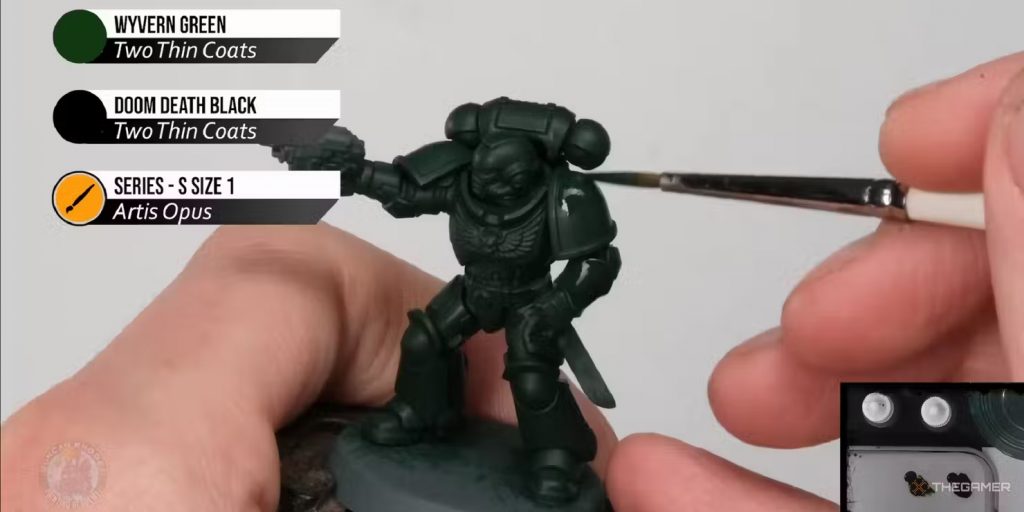
He represented Warhammer as the personable painting instructor you would consult for guidance. He discusses his ascent to online celebrity and why he risked everything to leave the miniatures firm and pursue his own interests as he sits down with TheGamer.
He tells me during a video connection, “It’s a constant run of being in the right place at the right time.” We talk about Duncan Rhodes Painting Academy, Games Workshop, his favorite model (a typical Bretonnian Knight), and his favorite instructional he’s ever filmed (Nagash, Maggoth Lord, Magnus, and Mortarion—the big boys) for almost an hour. He strikes me as humble and grounded, yet devoid of any trace of dishonesty. When I question him about how his painting and presentation abilities have undoubtedly contributed to his success, he says it’s all because he’s “willing to learn.”
Rhodes worked in retail alongside Chris Peach before joining Games Workshop as an army painter in the hobby team. He left his degree in archaeology because he didn’t think it was for him. His four years of full-time retail employment demonstrated his enjoyment in instructing others, but that wasn’t the only thing that drove him to become a Warhammer virtuoso.
He tells an anecdote from his youth, “I’ve always been a very introverted person.” “And I remember approaching a staff member [at a Games Workshop store] once for some assistance and a painting technique when I was pretty bashful as a child. And having the guts to ask was a huge thing for me.
“I stopped asking after receiving a rather patronizing response from him. I therefore didn’t want to be accountable for that kind of thing while I worked in retail. I was therefore fully committed to trying to teach everybody who asked me a question about how to accomplish anything. This subsequently served as the foundation for my eventual career. I’ve always wanted to make things accessible to everyone and to prevent anyone from feeling unqualified for something or from abandoning something they would otherwise love because they didn’t think they had the courage or the ability to achieve it.
Duncan Rhodes said, “I realized all of a sudden that people were making memes out of me.”
He used the same mindset to his work as a painter for Games Workshop. Additionally, Rhodes had the ideal set of painting hands when a new paint line was introduced and the business requested a promotional DVD with painting lessons to go along with the book, describing how the new colors worked.
He says, “To be painting the thing in this video, all they really needed was a pair of hands.” “At that particular moment, my schedule was somewhat more flexible than anyone else’s on our team. I also don’t bite my fingernails, so I had “pretty hands,” as they said. To fulfill this role, I was temporarily sent to the TV department for two or three weeks. I met Roger Yates there, too.
The other member of the Duncan Rhodes Painting Academy is Roger Yates. He is the creative force behind the scenes of Duncan’s Warhammer TV tutorials and is the brains behind the camera at Workshop and elsewhere. Yates was essential in getting Workshop’s video content off the ground and up to par, according to Rhodes. He showed him how to hold paintbrushes so that every camera could see them, how to present the models in the best possible way, and how to optimize the films.
Yates’ supervisor gave the go-ahead for the “unbelievably boring” video he shot of Rhodes building a Tau Riptide as a proof of concept for Warhammer TV. Rhodes applied for the job and was hired despite people advising him that “it wasn’t going to go anywhere and [he] would get made redundant very soon” because he had previously had experience working together. Sincerely believing that this was the next phase of teaching people to paint, he was drawn to the position by his prior work with Yates as well as his dread of missing out on a chance. How wise that choice was.
However, it took some time for the format to become popular. Rhodes didn’t realize how large the channel had gotten until later, because to the strong recommendation to stay away from reading comments (seconded). Initially, he observed that the employees at the Games Workshop were enthusiastic about the project. They informed him that they wouldn’t have tried painting an Imperial Knight without his guidance, and designers pointed out particular details of upcoming kits, such as Durthu, that they would like him to emphasize. He realized how big he’d grown about this time ten years ago, when the Knight and Durthu were released.
He laughs, “I realized all of a sudden that people were making memes out of me.” The term “two thin coats,” which Rhodes used repeatedly in all of his painting guides to succinctly and clearly describe his method, gave rise to the meme. Because Rhodes approached each video as if it were someone’s first, it became “organic” and took off without ever being meant to be a meme, catchphrase, or anything else.
“It became a catchphrase that I would say in every video very early on, and all of a sudden, saying two thin coats just became that,” he says. “It’s funny when you’re decorating your house and you have a big tin of paint and it says stir well, apply the multiple thin coats. It’s never bothered me because it’s actually really good 101 painting information.” Although it has been around for a very long time, it always seems to follow me because I was the first man to say it in these videos.
According to Rhodes, dealing with his nervousness and coming out of his shell has been made easier by his video work. While he was in school, he remembers being afraid to show his work in front of the class and depending on his classmates for support. However, as he advanced in Workshop, he was able to give internal presentations to groups of 250 people without any anxiety. Rhodes attributes his ability to relax and feel at ease in potentially difficult situations to his extensive work on camera.
But Rhodes pulled back at the pinnacle of his popularity. Yates and he left Games Workshop, and Warhammer TV’s face was banished. This was partially motivated by Rhodes’ desire to become independent from the constraints of working with Games Workshop items and miniatures, and partially by Yates’ desire to follow his entrepreneurial dreams. It was a big gamble, being the first in a long series of Warhammer presenters to go solo (see also: Rob ‘The Honest Wargamer’, Louise Sugden of Rogue Hobbies, and Chris Peach).
“We were certain that there would be no turning back,” says Rhodes. “Moreover, I didn’t act like I was saying, ‘Well, take this, Workshop, I’m going to pull the rug on Monday,’ or anything like. However, I was aware that not everyone would be pleased, so all I could do was attempt to handle everything as professionally as I could. I completed the entire process correctly, making sure to cross every T and dot every I. However, even at that point, I knew things would get tense and end there, so all we could do was part ways and hope for the best.
The Duncan Rhodes Painting Academy was set to go the day after the two departed Workshop. They were prepared with all of their tools, a social media campaign, and branding. All that remained was to record a few movies and hope that a sufficient number of people subscribed to their paid service so that they could earn a living from it.
The realization that people could see that we were attempting to expand our audience, cover more ground, and grant more tuition—that is, that we would no longer be limited to only Games Workshop material—was a very humble experience. Thank God it took off right away because it was really scary.
Now it’s simple. Many more Workshop presenters have departed after we did, and they’ve kind of looked at what we did and said, “It’s a viable thing,” but it hadn’t happened yet at that point. I have to go and do something different now because I’m not working in Workshop anymore, and if it hadn’t worked out, we would have had to try to get a new job.
It’s been good to be away from Games Workshop in many respects. Rhodes is no longer forced to battle for proper credit for his videos. He’s had to remind people that he didn’t develop the paint scheme, that he didn’t sculpt any of the miniatures he paints, and that he never worked for “Eavy Metal” because of Workshop’s sloppy attitude to giving credit to its employees, which has gotten worse since Rhodes’ departure. He is eager to emphasize Yates’ contributions to the Duncan Rhodes Painting Academy and his Warhammer TV appearance because of this.
The fact that Rhodes’ name is attached to the couple’s new company endeavor could appear strange. As usual, Yates is the one who suggests this. He also made the choice to include Rhodes’ name in each Warhammer TV painting guide video in order to personalize him for the audience. It was reasonable to give Rhodes’ name to the new business given his level of brand recognition. Additionally, Yates’ study revealed that individuals looked up Rhodes’ instructions by name, such as “Duncan Rhodes Striking Scorpions,” thus included it in the website address would be extremely beneficial to SEO.
Above all, though, Rhodes is content with his current situation and has no regrets about leaving Workshop. He remarks, “I am sitting happier now that Roger’s situation has improved,” always keeping his close friend and accomplice in mind. We are now pursuing our own interests. That was incredibly important to me because, at the time we were there [at Games Workshop], I don’t think it was fully appreciated what kind of influence he was having. His influence is now quite evident.
In addition to his tutorials, Rhodes now offers a 180-paint line that he Kickstarted to the tune of nearly a million dollars, however he doesn’t only use them in his videos. This was a fortunate accident that grew much faster than he ever could have dreamed, owing to an approach from Bob Watts, a seasoned industry veteran. Helping people is what Rhodes wants his legacy to be about, though.
“I feel really proud of that when I see people painting their [model] and it looks exactly like the one that we did,” he says. It is his hope that his effort has inspired others to try painting instead of being put off by intimidating kits.
Lastly, I ask Rhodes the question that many painters want to know, which is what’s currently on his workbench. In addition to painting Bretons for The Old World, he is clearly interested in Fallout Factions, a new skirmish game from Modiphius. If he can manage to give up video games, that is.
He laughs, “I’ve been playing Final Fantasy Rebirth instead, so I’ve kind of stopped painting.” He tells me that his PS5 is a Final Fantasy machine and that he’s loving the twists the remake is adding to his favorite game. “I hope to see a Final Fantasy 7 game developed similarly to Star Wars Shatterpoint,” he says.
Perhaps contacting Square Enix to develop a game based on its renowned IP is the next step for the Duncan Rhodes Painting Academy. Or perhaps I’m exaggerating once more. You can bet your bottom money that Rhodes will have a painting guide for Cloud, Tifa, and the rest of the crew if a Final Fantasy miniature line is ever produced.




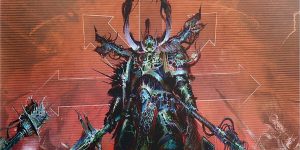
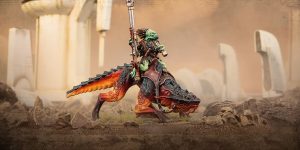
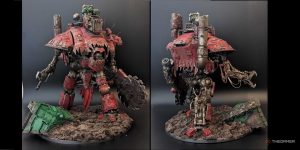
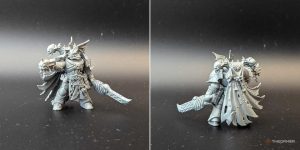
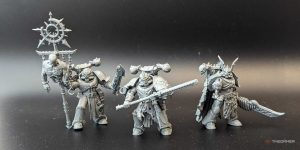
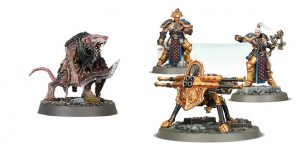
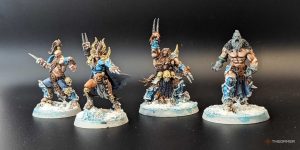

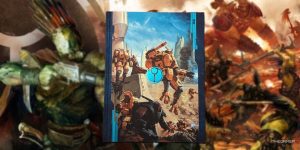
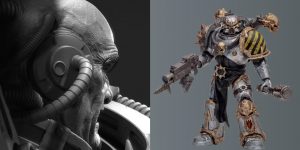
Post Comment